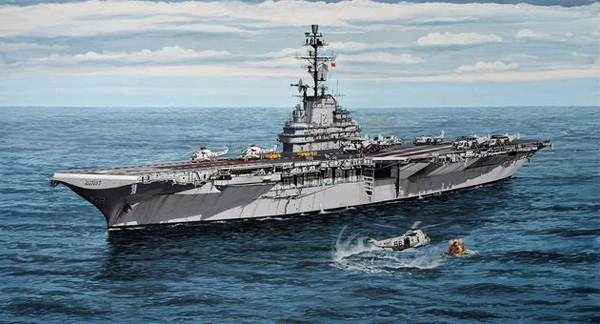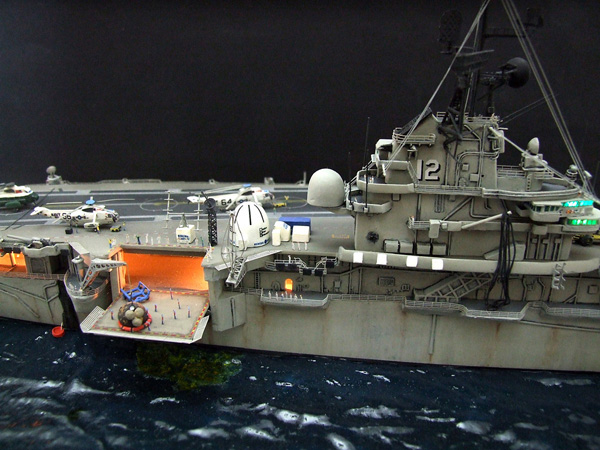
Short Feature Article by Lou Carabott
A few words from Geoff…
He’s back! And how pleased am I to be able to bring you another of Lou’s great Short Feature Articles (SFA). Lou is a fantastic scale modeller and it seems like little stops him from creating some beautiful replicas of some of the most iconic naval vessels of all time. You already have several short build articles from Lou C in Finished Now and you can find some ‘quick-links’ to these from Lou’s profile page in ‘about smn’.
The idea, as with the other SFA’s is that you have plenty of pics but a lot less words than usual but there’s enough in each article to give you a good steer as to what Lou has done to achieve his results.
You can see Lou’s completed USS Hornet Apollo 11 Recovery Mission, 1969 above and here are a couple more to whet your appetite ☺
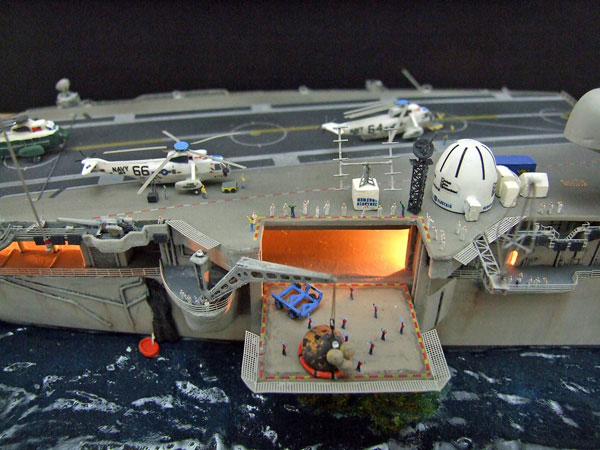
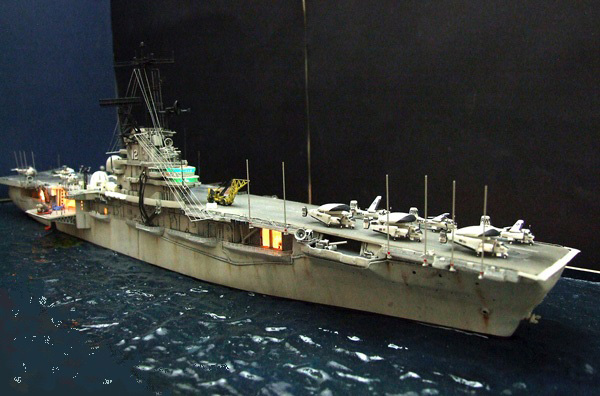
So… before I hand over to Lou, here is a little bit of background, plus some old footage from the Apollo 11 Recovery Mission – not the best quality film recording, but it certainly sets the scene for Lou’s build project that follows.
Here’s some background…
USS Hornet (CV/CVA/CVS-12) was a United States Navy aircraft carrier of the Essex class. Construction started in August 1942. She was originally named USS Kearsarge, but was renamed in honour of the USS Hornet (CV-8), which was lost in October 1942, becoming the eighth ship to bear the name.
Hornet was commissioned in November 1943, and after three months of training joined the U.S. forces in the Pacific War. She played a major part in the Pacific battles of World War II, and also took part in Operation Magic Carpet, returning troops back to the U.S. Following World War II, she served in the Korean War, Vietnam War, and also played a part in the Apollo program, recovering astronauts as they returned from the Moon.
Hornet was finally decommissioned in 1970. She was eventually designated as both a National Historic Landmark and a California Historical Landmark, and in 1998 she opened to the public as the USS Hornet Museum in Alameda, California.
On 25 August 1966, she was on recovery station for the flight of AS-202, the second unmanned flight of a production Apollo Command and Service Module. The moon ship rocketed three-quarters of the way around the globe in 93 minutes before splashdown near Wake Island. Scorched from the heat of its re-entry into the Earth’s atmosphere, the Apollo space capsule, designed to carry American astronauts to the moon, was brought aboard Hornet after its test; that command module is currently on display aboard Hornet.
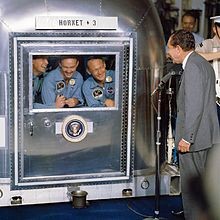
Hornet returned to Long Beach on 8 September, but headed back to the Far East on 27 March 1967. She reached Japan exactly a month later and departed the Sasebo base on 19 May for the war zone. She operated in Vietnamese waters throughout the first half of 1967.
Hornet recovered the astronauts from the first moon landing mission, Apollo 11, on 24 July 1969. President Nixon was on board to welcome the returning astronauts back to Earth, where they lived in quarantine aboard Hornet prior to transfer to the Lunar Receiving Laboratory at Houston. The first steps on Earth of returning moonwalkers Neil Armstrong and Buzz Aldrin, with Command Module Pilot Michael Collins, are marked on her hangar deck, as part of her Apollo program exhibit.
Hornet once again served in the space program with the recovery of Apollo 12 on 24 November. Returning astronauts Charles Conrad, Jr., Alan L. Bean, and Richard F. Gordon, Jr., were picked up from their splashdown point near American Samoa
